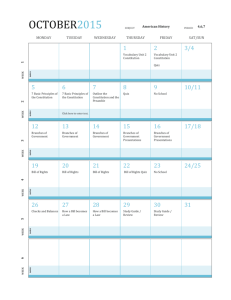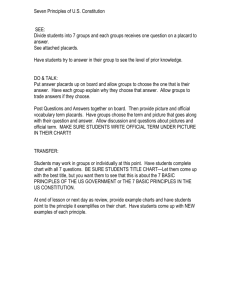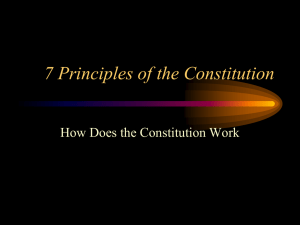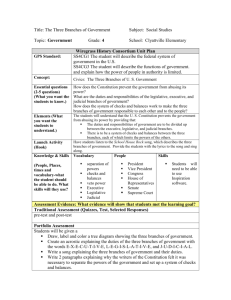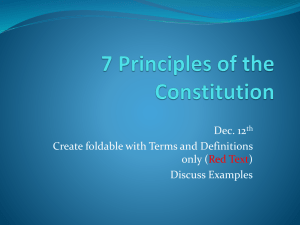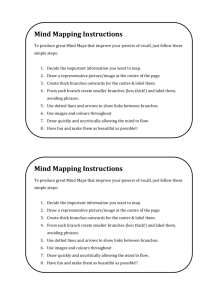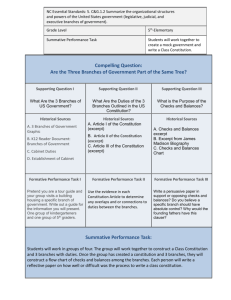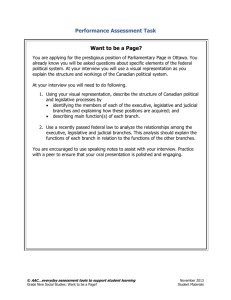SS. Chapter 14 - RogersSocialStudies
advertisement
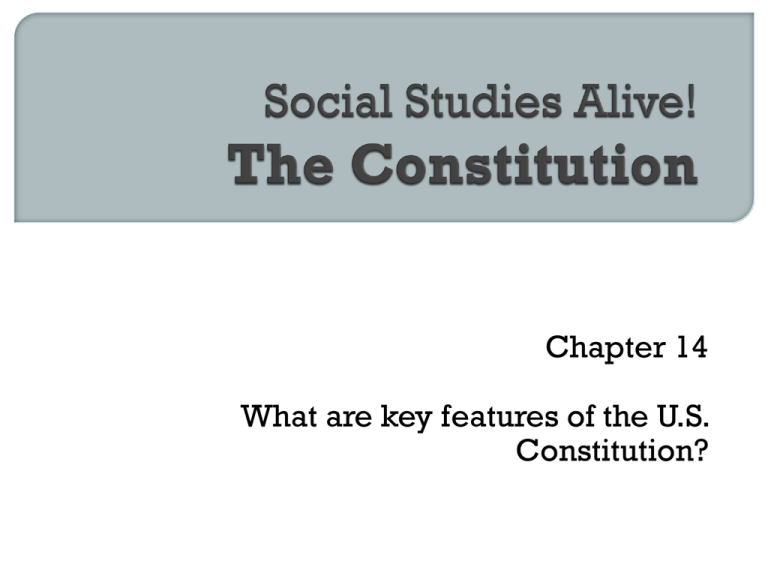
Chapter 14 What are key features of the U.S. Constitution? I can… identify the weaknesses in the Articles of the Confederation and the work of the delegates to the Constitutional Convention that led to the creation of the U.S. Constitution. examine and list the key powers of the three branches of government created by the Constitution. identify which branches of the government can act in certain situations. With your textbook, try to balance it using ONLY the end of your pencil eraser. • Attempt #1 Now get into a group of three. Try to balance the book on the ends of three pencils. • Attempt #2 Which method was more successful? This chapter will show us how three branches of government helped make the U.S. government stronger and more lasting than a government created under the Articles of Confederation had been. Turn to page 187 and let’s read this page. Look at the stool at the bottom of the • What do you see? • What does the stool represent? • In what ways is the government under the Constitution like a three-legged stool? page. You are now going to read Sections 14.2 - 4.6. Use your Reading Notetaker 14 to record important information from this chapter. • We will do this together, but EVERYONE is expected to complete the Notetaker. Let’s read pages 188-189. Then complete your Notetaker for section 14.2 & 14.3. Now go ahead and read Sections 14.4 - 4.6. Use your Reading Notetaker 14 to record important information about the Three Branches of Government. • Partner up (if you want). Be ready to discuss your answers. What is a democratic society? What was the Articles of the Confederation? • What was its’ main weakness? What What are the three branches of government? is the main responsibility of the each (legislative, executive, & judicial) branch? 1) Partner up! 2) Cut out the Power Cards and the illustration cards (along the dashed lines). 3) Carefully examine each illustration and determine which constitutional power it represents. 4) Place the illustration on the corresponding Power Card. When everyone is finished, we’ll check your answers then glue the illustrations to the Power Cards. 1) You will have ONE minute to identify which Power Card(s) that any of the branches might us in that situation. 2) Put the Power Cards in the proper sequence, when more that one Card is used, to show which branch would act first, second, and last. 3) Your team receives one point each time you select the correct Power Card(s) for a situation. Note: In Situations 1-4, only one Power Card will be played. Situations 5-7, you will use two Power Cards. Situation 8-9, you will play two or more Power Cards. What was the Great Compromise? pg. 190. Let’s read about “Checks and Balances” and the summary – pgs. 194-195. ___________________________________________ What powers does the legislative branch have to check, or limit, a power of the other branches? What powers does the executive branch have to check, or limit, a power of the other branches? What powers does the judicial branch have to check, or limit, a power of the other branches? At the beginning of the game, which branch did you think would be the strongest? Why? • Which do you now think is the strongest? What Why does this tell you about the three branches? do you think the writers of the Constitution created this system of checks and balances?
